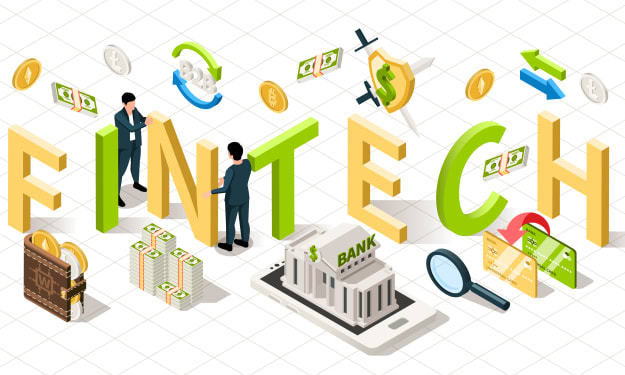Key Strategies for Promoting a Brand Using Web 3 Marketing Techniques
Discover powerful strategies to promote your brand using cutting-edge Web 3 marketing techniques. Leverage decentralization, NFTs, gamification, and more for authentic and engaging connections with your audience. Elevate your brand in the decentralized web landscape.

In the ever-evolving landscape of digital marketing, the emergence of Web 3.0 has opened up new horizons for brands to engage with their audience in innovative and impactful ways. Web 3.0, often referred to as the decentralized web, is characterized by its focus on user empowerment, data ownership, and enhanced interactivity. Leveraging Web 3 marketing techniques can offer brands a competitive edge by fostering deeper connections, trust, and authenticity with their target audience. In this article, we will delve into the key strategies that brands can employ to promote themselves effectively using Web 3 marketing techniques.
1. Embrace Decentralization:
Central to the concept of Web 3.0 is decentralization, which empowers users and eliminates intermediaries. Brands can capitalize on this by decentralizing their content distribution, utilizing blockchain technology to ensure transparency and immutability. Decentralized content platforms, such as decentralized social media networks or blockchain-based blogging platforms, allow brands to engage with their audience directly without relying on traditional gatekeepers. By adopting these platforms, brands can promote their products or services while showcasing their commitment to transparency and user empowerment.
2. Create NFT Campaigns:
Non-Fungible Tokens (NFTs) have gained immense popularity within the Web 3.0 ecosystem. Brands can leverage NFTs to create unique and limited digital assets that resonate with their audience. These assets can be used for various marketing purposes, such as exclusive merchandise, virtual event tickets, or even virtual real estate. NFTs not only enhance brand visibility but also offer a sense of exclusivity and ownership to consumers, driving engagement and loyalty.
3. Gamification for User Engagement:
Gamification has proven to be an effective strategy for boosting user engagement and interaction. Brands can integrate gamified elements into their marketing campaigns, encouraging users to participate in challenges, quizzes, or virtual treasure hunts. Web 3.0's enhanced interactivity allows for the creation of immersive and interactive experiences that keep users engaged while promoting the brand message.
4. Personalized and Tokenized Loyalty Programs:
Tokenization on the Web 3.0 platform enables brands to design personalized loyalty programs that reward users for their engagement and purchases. By issuing utility tokens or non-transferable tokens, brands can create an ecosystem where users are incentivized to interact with the brand, share content, and make purchases. These tokens can be redeemed for exclusive discounts, digital assets, or even voting power in brand-related decisions, thereby fostering a loyal community.
5. Interactive and Immersive Content:
Web 3.0 technology allows for the creation of highly interactive and immersive content experiences. Brands can leverage virtual and augmented reality (VR/AR) to create engaging brand experiences that transport users into a new dimension. Whether it's virtual showrooms, immersive storytelling, or interactive product demonstrations, brands can forge a deeper connection with their audience by providing memorable and unique experiences.
6. User-Generated Content (UGC) Challenges:
Engaging users through UGC challenges is a potent way to promote a brand's values and products. By launching UGC challenges on decentralized platforms, brands can encourage users to create and share content related to their products or services. These challenges not only generate user-generated content but also facilitate organic word-of-mouth marketing as participants share their entries within their networks.
7. Enhanced Data Ownership and Privacy:
Web 3.0 places a strong emphasis on data ownership and privacy. Brands can build trust with their audience by ensuring transparent data practices and allowing users to have greater control over their data. Implementing decentralized identity solutions and giving users the option to control how their data is used can enhance brand credibility and attract privacy-conscious consumers.
8. Influencer Collaborations and Tokenization:
Influencer marketing takes on a new dimension in the Web 3.0 era. Brands can collaborate with influencers who align with their values and tokenize these partnerships. Influencers can be rewarded with branded tokens for promoting the brand, and their followers can earn tokens for engaging with the brand's content or making purchases. This approach not only extends the reach of the brand but also creates a sense of community and shared ownership.
9. Cross-Platform Interoperability:
Web 3.0 fosters interoperability between different platforms and ecosystems. Brands can leverage this interoperability to seamlessly integrate their marketing efforts across various Web 3.0 platforms, such as decentralized social networks, virtual worlds, and blockchain marketplaces. This unified approach enhances brand visibility and ensures a consistent brand message across different platforms.
10. Leveraging Smart Contracts for Promotions:
Smart contracts, a hallmark of blockchain technology, can be utilized for executing automated and transparent promotional campaigns. Brands can create time-bound offers or discounts using smart contracts, ensuring that users receive rewards directly upon meeting specific criteria. This eliminates the need for manual intervention, streamlining the promotion process and enhancing user trust.
In conclusion, Web 3 marketing techniques offer brands a dynamic and engaging way to connect with their audience, foster loyalty, and stand out in a crowded digital landscape. By embracing decentralization, NFTs, gamification, personalized loyalty programs, interactive content, user-generated challenges, data ownership, influencer collaborations, cross-platform interoperability, and smart contracts, brands can effectively promote themselves while aligning with the values of the Web 3.0 era. As the digital landscape continues to evolve, staying at the forefront of Web 3 marketing trends can position brands for long-term success and relevance.






Comments
There are no comments for this story
Be the first to respond and start the conversation.